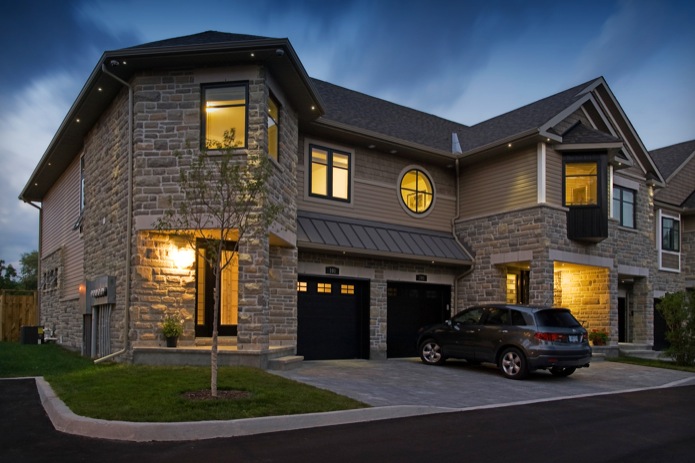Why LEED Matters to The RGB Group
The Leadership in Energy and Environmental Design (LEED) Green Building Rating System™ inspires every aspect of The RGB Group’s developments and associated construction project, management and contracting services. LEED encourages and accelerates global adoption of sustainable green building and development practices through the creation and implementation of universally understood and accepted tools and performance criteria.
 Montauk Private Executive Townhomes: The first LEED for Homes Platinum Residential Development in Ontario
Montauk Private Executive Townhomes: The first LEED for Homes Platinum Residential Development in Ontario
“What LEED means most to me is that we’re building for the next century,” says The RGB Group’s CEO Rolf Baumann. “The quality and efficiency of LEED-certified structures ensures they’ll be around as long as people need them.”
LEED promotes a whole-building approach to sustainability by recognizing performance in five key areas of human and environmental health:
- Sustainable Site Development
- Water Efficiency
- Energy Efficiency
- Materials Selection
- Indoor Environmental Quality
LEED credits and prerequisites are organized into these five categories. An additional category, Innovation and Design Process, addresses sustainable building expertise as well as design measures not covered under the other five environmental categories.
LEED Canada for Homes also includes a Location and Linkages category and an Awareness and Education category. LEED certification is based on the total point score achieved, following an independent review and an audit of selected credits.
With four possible levels of certification (Certified, Silver, Gold and Platinum), LEED is flexible enough to accommodate a wide range of green building strategies that best fit the constraints and goals of particular projects. Baumann also appreciates the smarter construction disciplines introduced by LEED’s green building approach.
“One example is that no more than 10 percent of additional materials can be left on the construction site at any given time, and 90 percent or more of all waste must be recycled. Another example is that LEED encourages local sourcing wherever possible,” he says. “For one of our Ottawa developments, I was able to source a supply of state-of-the-art high-efficiency L.E.D. lighting units from a new high tech company just down the road.”
“The bottom line on LEED,” says Baumann, “is it fits perfectly with The RGB Group approach — real green buildings for life.”


